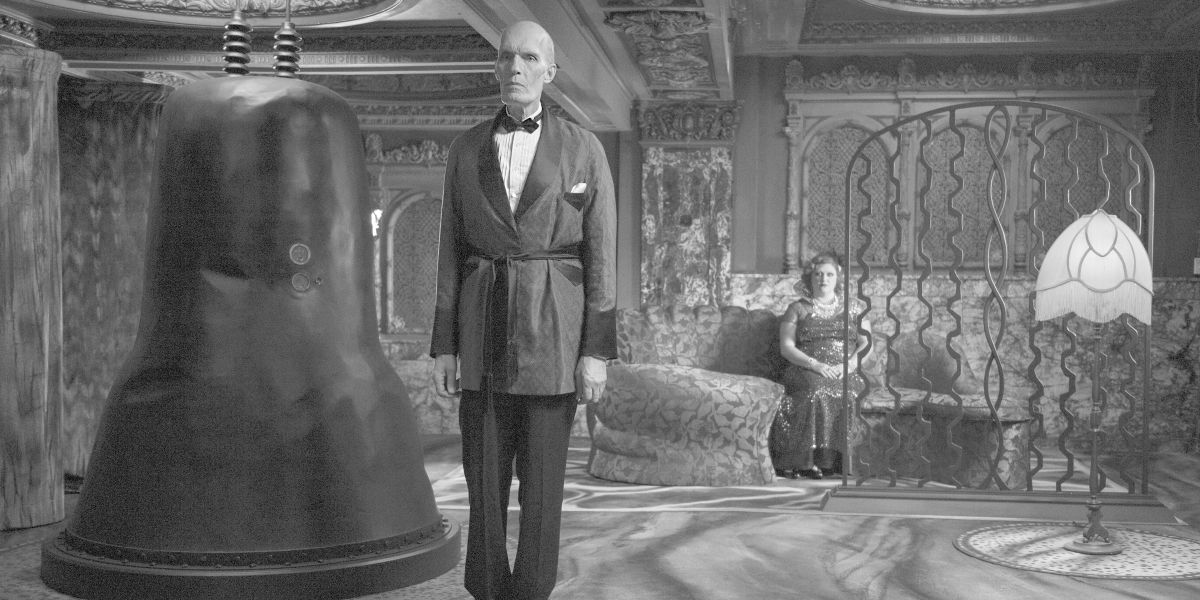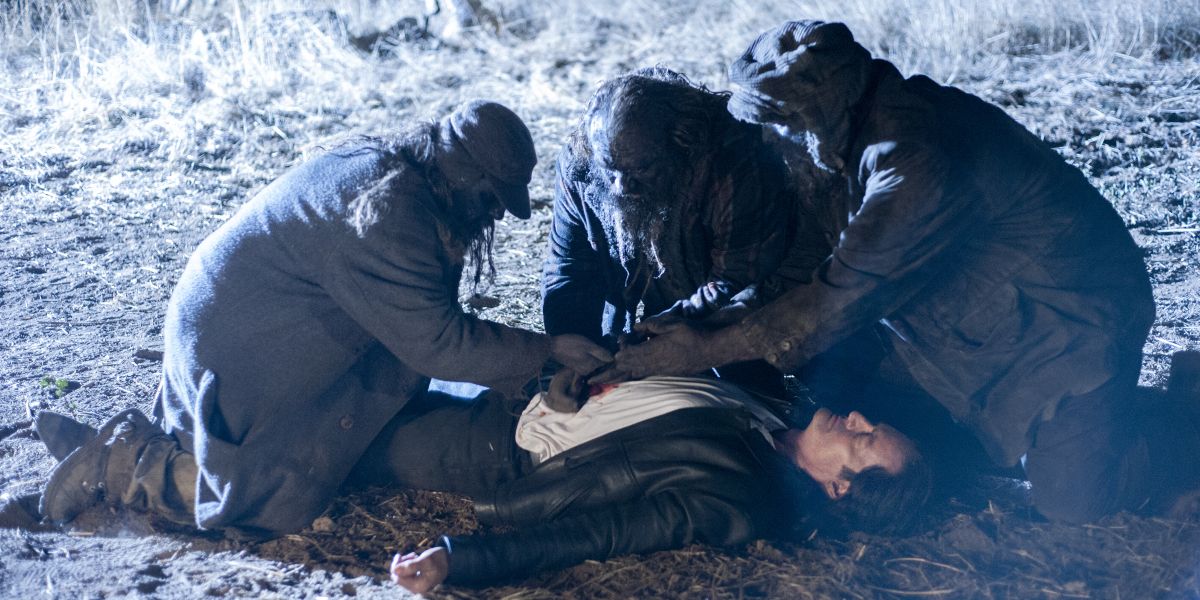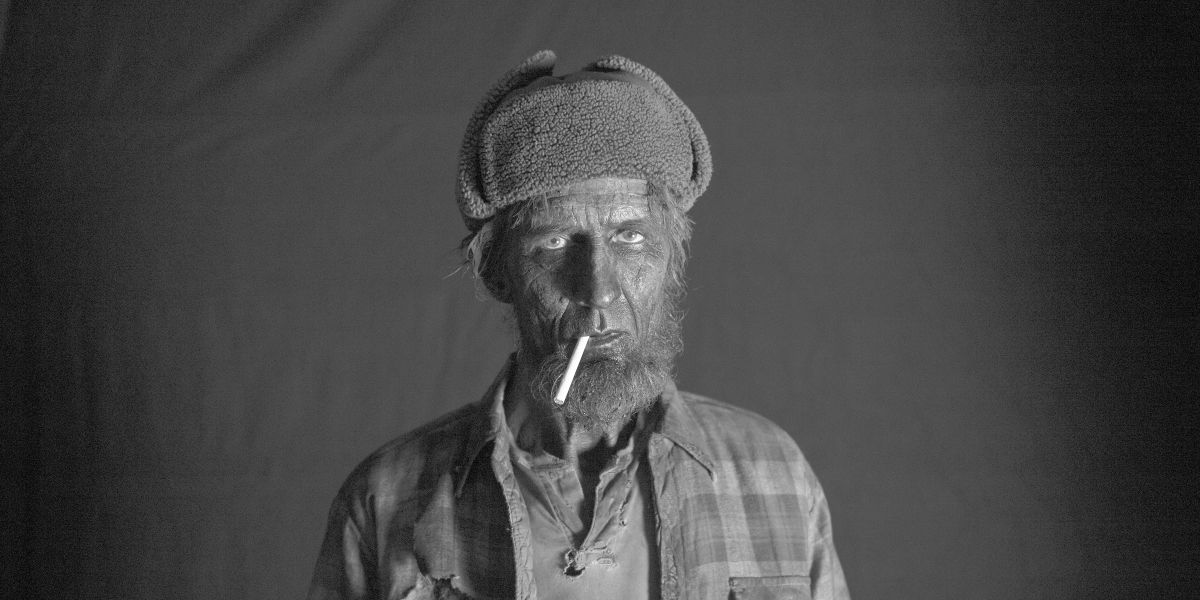David Lynch delivers not only the weirdest episode so far in the new season of Twin Peaks, but also one of the weirdest episodes anyone will likely see all year.
"Gotta light?" With that phrase, David Lynch may have created one of the most potent anti-smoking campaigns in history. Okay, so maybe that's not what he was going for, but with Twin Peaks 'Part 8', the director certainly delivered one of the most astonishing hours of television anyone will see all year, and in doing so reached an artistic height perhaps not seen since Mulholland Dr. in 2001. Then again, considering what was on display for the hour, Lynch may have just set a new bar for himself.
It's difficult not to be hyperbolic talking about 'Part 8', which, in time, may prove a detriment to the episode, as people have a chance to watch it again, and can look at it with something other than sheer awe that something like this exists on television. For now, though, we can all bask in the warm glow of the hour's surrealism and the notion that Showtime facilitated the mainlining of pure Lynch into the brains of everyone who tuned in.
After the past few weeks spent with Dale Cooper stuck in a seemingly perpetual state of Dougie-ness, the shift from potential Lucky 7 Insurance scams involving Tom Sizemore, and watching Naomi Watts own anyone who spoke to her or her formerly lime green-clad husband, 'Part 8' isn't just an achievement in surreal storytelling, it's also a welcome reprieve from certain patience-testing threads the series has been unspooling as of late. The shift in direction was present in the episode's early going – and perhaps even at the end of 'Part 7', when Dark Dale blackmailed his way out of a federal prison and got a free rental car to boot – as Ray and the evil doppelgänger drove along a highway at night. But moving away from the sometimes funny, heightened domesticity of Dougie and Janey-E's lives, not to mention the various other narratives going on, also gives the series a chance to push forward with a completely different plot thread that has largely been left dangling since Dark Dale erupted in his car after driving it off the road.
Oddly, for an hour of television that gets as surreal as 'Part 8' does, there is a sense that Twin Peaks is more focused than it has been in weeks, and likely since the premiere back in May. Dark Dale and Ray's conversation points again to the information the latter has that the former wants, and is apparently willing to get violent in order to obtain it. "The information" may just be a McGuffin for now, but it gets the show where it needs to be: with Dark Dale lying dead (temporarily) on the ground after Ray puts three bullets in him.
From there, 'Part 8' begins its slow but steady descent into some of the wildest, most imaginative surrealism ever put on television. Shortly after falling, Dark Dale's body is descended upon by a pack of apparitions (the Woodsmen) that bear a striking resemblance to the individual behind the dumpster in Mulholland Dr. and a certain individual seen wandering a hallway not too long ago. But even as Ray's panicked flight from the scene and equally worried phone call to Phillip Jeffries – confirming the two are in cahoots – seems to offer some sense of what he and Dark Dale were up to, Lynch takes a dramatic left turn and introduces a sequence featuring Nine Inch Nails that plays out in its entirety and demonstrates the filmmaker's knack for filming musical performances.
The end of the performance signals the beginning of the hour's trip into surrealism, as Twin Peaks jumps back in time to 1945, to White Sands, New Mexico to witness the Trinity nuclear test, and to push deeper into the sort of presentation no one else would likely think to do. As Lynch slowly moves into the mushroom cloud and then through some fantastic hallucinations, the sequence goes on and on. It's some stunning imagery, and its use here is fascinating in the context of what immediately came before. Yet the only thing that is immediately clear is how this becomes the line where some in the audience with either be utterly captivated or they simply tap out.
Lynch brings forth some hypnotizing visions, like a convenience store caught in some sort of hellish time-lapse, a massive lighthouse on a vast ocean, and some familiar faces, as BOB shows up in a bubble that's later seen and manipulated by a woman listed as Senorita Dido (a new character played by Joy Nash) and Carel Struycken's the Giant (or ???????, as he's listed in the credits). The scene is one of the episode's longest, and it plays out completely free from dialogue, making the Giant's levitation and Senorita Dido's release of a gold orb containing Laura Palmer's face onto, presumably, the plane of existence in which she lived, a unique, and confounding exercise in storytelling.
Some might be right in theorizing that this is the genesis of the story that kicked Twin Peaks off, but Lynch isn't done there; the filmmaker has so much more to add to the episode, like a healthy dose of the existential horror that's infused in nearly all of his projects. In 'Part 8' Lynch again utilizes nostalgia for a certain era – the 1950s – and allows a deep sense of terror to permeate the otherwise quaint setting that's established by the sight of a young boy walking his crush home at night and asking for a kiss. What follows is an extension of both the convenience store sequence and the apparitions that hovered over Dark Dale's body. It's also the most deeply unsettling moment to his the series since the glass box in the premiere.
As it turns out, the Woodsmen have a message to broadcast, and it's not an answer to the question "Gotta light?" Instead, it's an unnerving verse that says, "This is the water and this is the well. Drink full and descend. The horse is the white of the eye and dark within" and is made horrifying by virtue of how many times it's repeated as a DJ has the Woodsman's fingers slowly penetrating his skull. Adding to the mystery are the people listening to the broadcast who suddenly lose consciousness or, like the young girl who was walked home, falls into a deep sleep as a grotesque creature crawls into her mouth.
Nobody fills dreamlike imagery with as much nightmarish implication as Lynch, and 'Part 8' sees the director using the full range of his artistic sensibilities, as he remains committed to presenting that which interests and clearly amuses him. Once the buzz surround the episode dies down, it will likely be one of the more polarizing hours of Twin Peaks: The Return, and it's certainly an hour worthy of that discussion.
Next: Twin Peaks: Part 7 Review & Discussion
Twin Peaks continues on Sunday, July 9 with 'Part 9' @9pm on Showtime.
Photos: Suzanne Tenner/SHOWTIME



